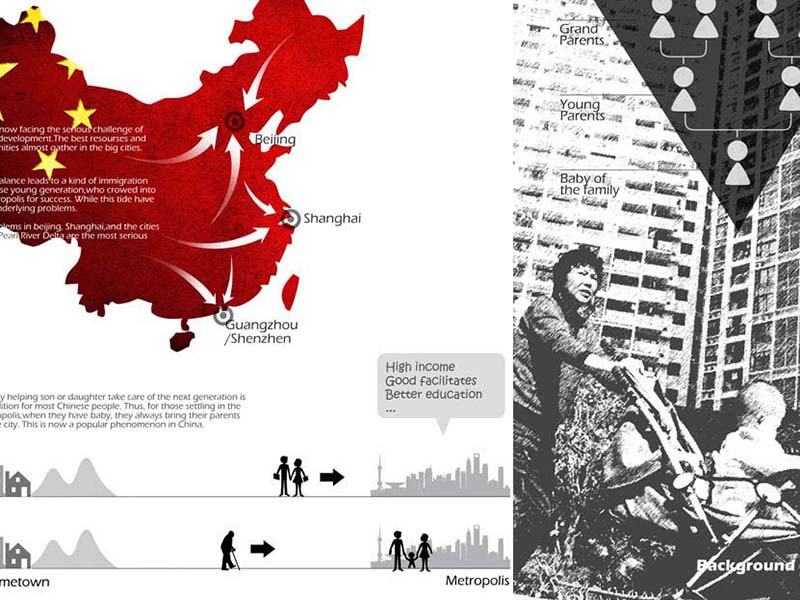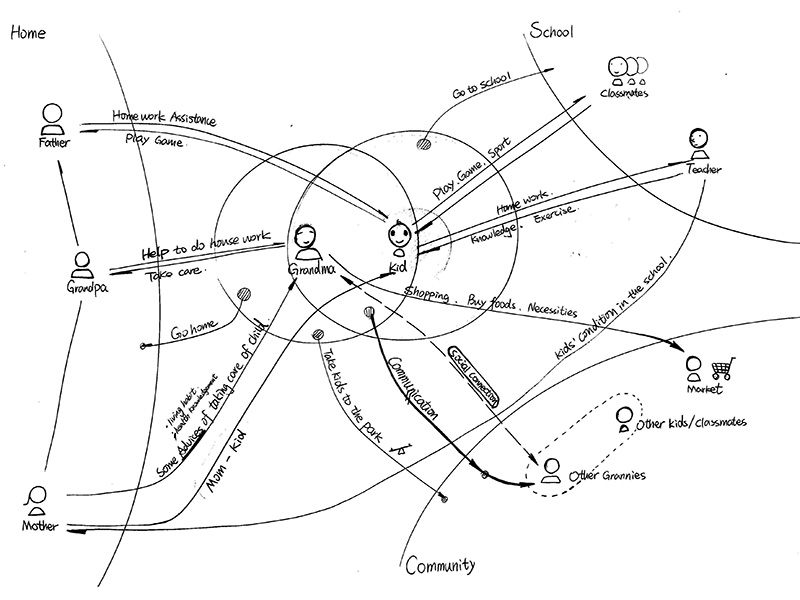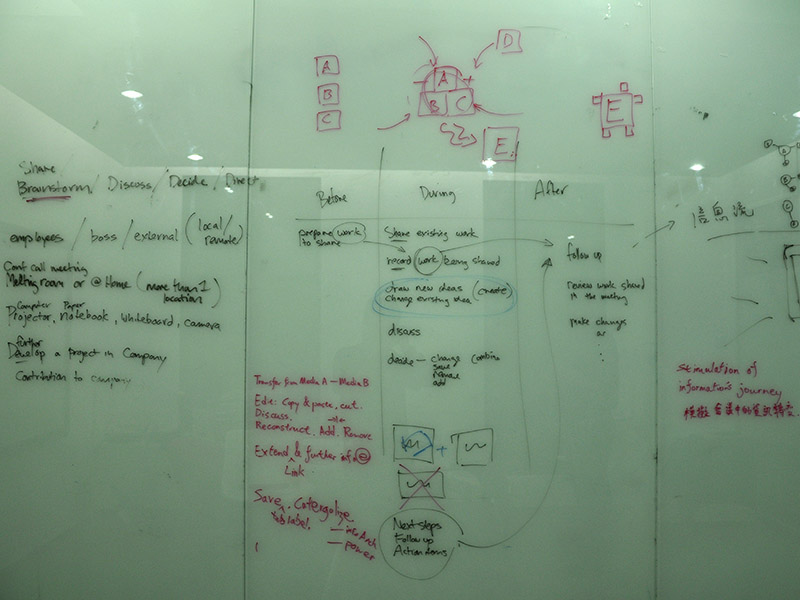

This is as research focused interaction design project directed by the Schoold of Design, Hong Kong Polytechic University. We explored a social issue in China--non-resident elderly by doing an intensive user research, and we tried to figure out how technology can be designed to help this group of people change their situation.
The design team was one psychology background student, one urban planning background student, and I was the interaction designer facilitating the design process.
The past two decades in China have witnessed a tremendous tide of immigration, from inner and backward places to coastal and advanced cities. This population now is bringing about another immigration trend, which is mainly the young people’s parents, who have already retired or been very old, leave their hometown and come to big cities to help their sons or daughters to take care of the newborn babies, meanwhile to alleviate the work pressure of their sons or daughters by helping them on daily life.
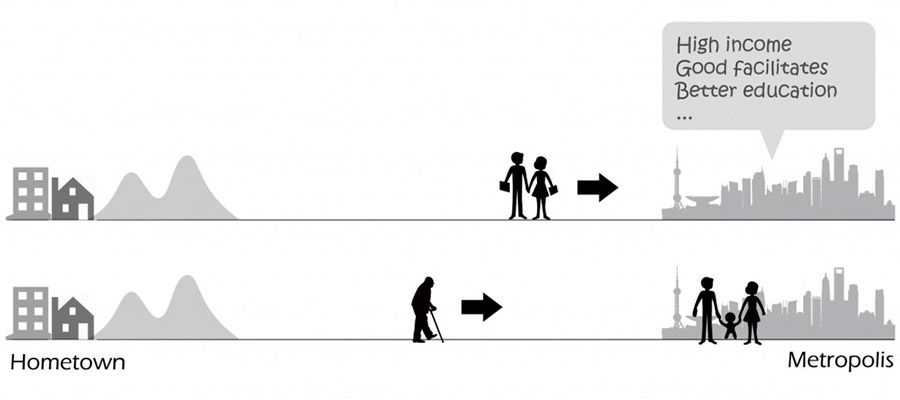

The life for the non-resident elderly in the city is totally different from the life in the hometown. An investigation shows that 78.5% non-resident elderly are unwilling to stay in the city[2]. From the desk research, we found lacking of communication is the biggest trouble faced by those newcome non-resident older adults.

At first, we conducted an observation at Nanshan district in Shenzhen city, the youngest urban area in China, where has a large population of young immigrant and non-resident elderly. According to the census by government in 2012, there were nearly 94000 older adults above 60 years old in this district, among which nearly 70000 are non-resident[3].
From our observation, we found that the parks and recreation sites in the residential areas are completely gathering places for elderly. Youngers all go to work during the daytime, leave only old people here for various activities. Some play cards or chess, some perform old musics and drams and the rest do exercise by themself or just seat around watching other people’s activities.
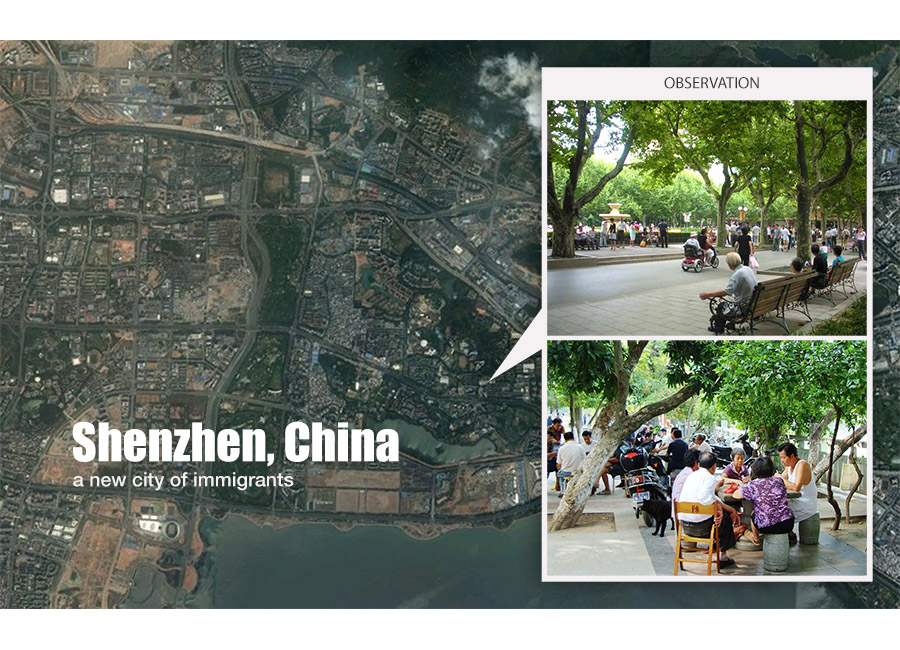

We conducted a qualitative interview study, participants were 9 non-resident older adults who all came to Shenzhen in the past 5 years. Our objective is to gain a deeper understanding of the non- resident older adults’ life situation and their attitude on rebuilding the social relationships in the city with information technologies.
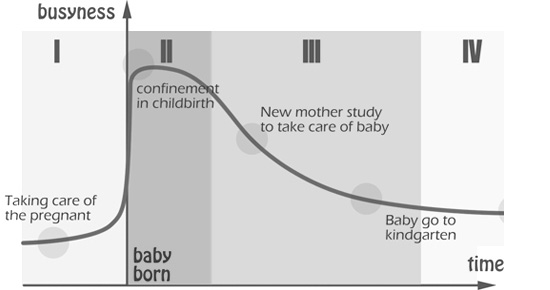
Non-resident elderly commonly have a variation of busyness after they come to city. The key time point is when the baby born, as the parents of the new parents and the grandparents of newborn baby, they undertake the responsibility of taking care of the baby. Figure 2 briefly describes the variation. We found the newcome older adults(zone I) and those gradually free from the obligation of taking care of baby(zone III) are more apt to feel lonely; while those in period II are busy on the babies and those in period IV always have got used to the life in city or they have had some friends here.
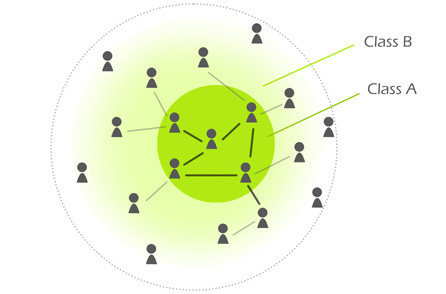
“Older adults like to go to the park nearby for gathering with others in certain kinds of activity. These activities are the most important ways for non-resident elderly to develop their social relationship. However, many of them can not find their positions in these activities, because some of them are lack of certain entertainment experience or skills, some are too introvert, or not able to speak mandarin. They walk around the activities but are not able to take part in.
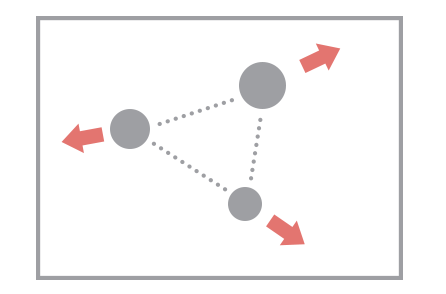
Most of the interviewees talked about their feeling of loneliness, especially female older adults who come to city alone. Unexpectedly, although our interviewees realized their loneliness, they hardly thought about finding some new friends in the city. Just like one said: “ I just want my daughter could spend more time to communicate with me”, and another said: “ I hope to have someone could talk with me everyday, but I don’t expect that I can find a friend here.”
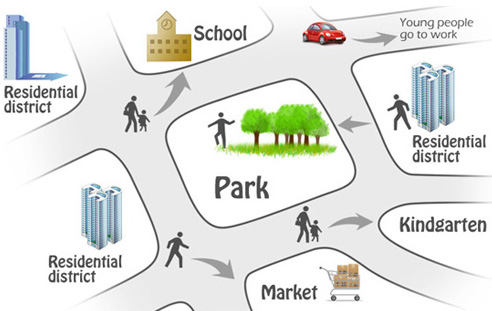
Being unfamiliar with the city and being responsible for taking care of babies or children, most non-resident elderly always have a regular life within a quite limited area coverage, which is called Neighborhood Unit in urban planning. They go shopping, go to kindergarten or school to pick up kids, go to the park for recreation all in the same unit(Figure 3). And meanwhile, because of the high residential density in the city, large amount of people live in the same neighborhood unit.

The non-resident elderly mostly come from inland and relatively backward district, they have less experience of using computer and related devices compared with the city residents. The most frequently used ICT device is mobile phone, by which they are able to contact with their sons or daughters when they need help. They mostly use mobile phones with very simple functionality because the price is cheap and there is no complex operation.
Storyboard
We summarized two different personas, and use storyboard to depict their daily life. The most distinct pattern of behaviour between them is the duty on the child. The first-kind elderly look after their grandchildren all the day; while the second-kind elderly are mainly responsible for the house works and escorting the children to go to kindergarten, and pick up them back in the afternoon.

Touch points
Other than personas, we also built several brief scenarios directly to highlight the touch points and design elements within the context. These scenarios came from the real-world situations that we observed or inquired in the ethnographic research.
(1) Uncle A and uncle B are waiting their grandchildren outside the kindergarten before the school is over, they almost meet with each other everyday at this time and this place, but they've never talked with each other, just wait for their grandchildren.
(2) Aunt A and aunt B take their little grandsons to the park. After a while, the two kids play around together, then the grandmothers A and B also come together and have talk.
(3) Many elders always play chess in the park. Uncle A and uncle B are both interested in playing chess, but they are newcomer so they could only be bystander of others chess game. This afternoon they look on a game at the same spot, seating around, they show their opinion about the game and talk with each other.
One important value of scenario-based design is that the vivid description of real life situations could provoke so called “what if” discussions, which could be quite significant for the transition from research to design. What if the kindergarten hold a parenting game and arrange these two elders and their grand children together in the game? What if the two elders find they are from the same place? What will happen if they live in the same building?

We proposed commuCity, a unique SNS that collects non-resident elderly’s informations into the system to discover and manifest the potential connections among them based upon the matching results with those informations. Unlike the SNSs for young people, the end user of commuCity are not elderly themselves but the various sectors within the community such as kindergartens, healthcare centers, or community service centers etc. And they would turn the virtual connections automatically generated according to the degree of correlation among the elders’ informations in the system into real-life activities with various forms. In this approach, those who are most likely to become friends will be brought together in a natural way.
The commuCity system could be regarded as extension of the community service. Although at present, some community’s endeavors of social work have started to help non-resident elders rebuild their social relationship in the city by means of community activities, they are not effectively targeted[11]. While commuCity takes advantage of technology to create more targeted activities between the elders who share common grounds.
With regard to the information entrance of the system, we designed a very simple interface on iPad for elderly input their informations. We investigated various ways of information input, such as mobile phone, PC or touch screens at the entrance of residential buildings.
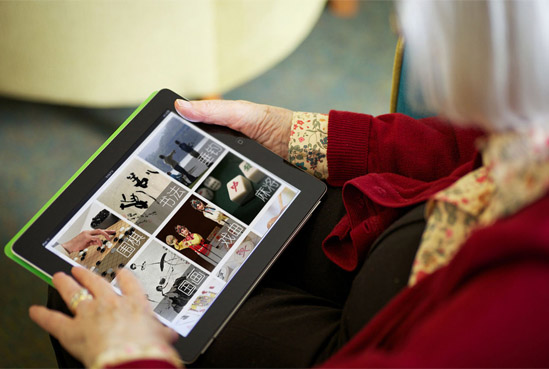
Affinity Diagram
Enthnographic Research
Contexual Inquiry
Brainstorming
Ideation Sketch
Prototyping
Card-sorting
Usability Test

